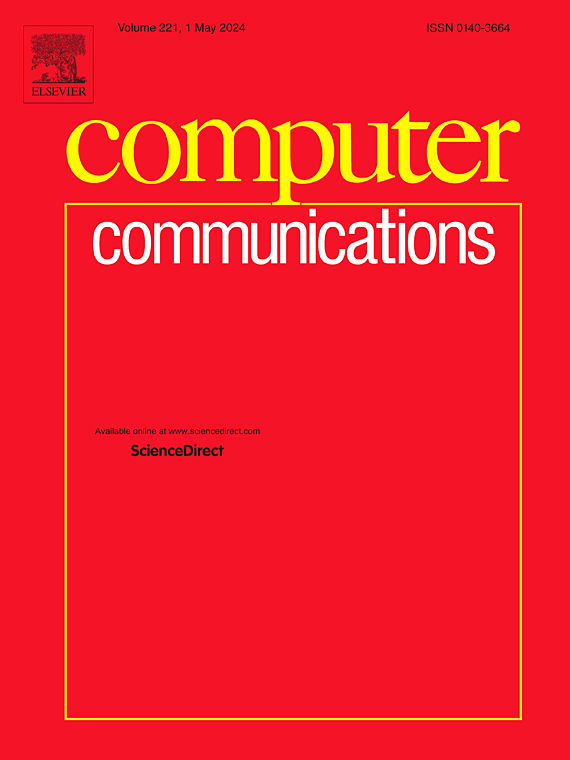对边缘云连续体的网络数字孪生体系结构、能力、挑战和需求的全面调查
IF 4.5
3区 计算机科学
Q1 COMPUTER SCIENCE, INFORMATION SYSTEMS
引用次数: 0
摘要
NDT (Network Digital Twin)技术可以采集物理、虚拟和软件组件的数据,支持实时网络性能分析、仿真和智能物理网络控制。本文综述了无损检测规范的现状,探讨了无损检测对网络运营商的好处及其在未来网络管理中的可能作用。讨论了无损检测的关键组件、体系结构以及机器学习和人工智能模型在无损检测中的集成。此外,它还涵盖了虚拟化技术管理、软件定义网络功能的适用性以及用于增强无损检测的仿真工具。两个角度使得本调查的立场不同于已有的研究;首先,它强调了无损检测在边缘云连续体(ECC)情境化方面的局限性。ECC是边缘计算和云计算有目的的趋势集成,涉及多个利益相关者,如服务提供商、客户、平台或基础设施提供商。然而,目前的无损检测规范没有提到除NOs之外的利益相关者受益的方法。我们还讨论了在无损检测建模、现有数据模型和可重用词汇表期间需要考虑的重要计算和通信技术转换,这些术语表可以扩展,以实现所有利益相关者(主要是服务提供商和客户)的详细ECC表示。其次,提出了一个涵盖描述性和规范性特征的数据模型,旨在提供ECC组件的粒度表示,以满足利益相关者的需求并呈现特定的用户信息视图。探索了不同的无损检测视角,并提出了数据模型,减少了现有无损检测限制对ECC表示的影响。本文章由计算机程序翻译,如有差异,请以英文原文为准。
A comprehensive survey of Network Digital Twin architecture, capabilities, challenges, and requirements for Edge–Cloud Continuum
Network Digital Twin (NDT) collects data from physical, virtual, and software components and supports real-time network performance analysis, emulation, and intelligent physical network control. This paper surveys the current state of NDT specifications and explores NDT benefits for Network Operators (NOs) and its possible roles in future network management. It discusses the NDT key components, architecture, and integration of Machine Learning and Artificial Intelligence models in the NDT. Further, it covers virtualization technology management, suitability of Software-Defined Networking capabilities, and simulation tools to empower NDT. Two perspectives make the position of this survey different from existing studies; first, it highlights NDT limitations regarding Edge–Cloud Continuum (ECC) contextualization. ECC is a purposeful trending integration of Edge and Cloud Computing, involving multiple stakeholders like Service Providers, Customers, and Platform or Infrastructure Providers. However, current NDT specifications have not mentioned the ways to benefit stakeholders other than NOs. We also discuss notable computing and communication technologies transformations necessary to consider during NDT modeling, the existing data models, and reusable vocabularies that can be extended to achieve a detailed ECC representation for all stakeholders, essentially for Service Providers and Customers. Secondly, a data model is proposed that covers descriptive and prescriptive features and aims to provide a granular representation of ECC components to meet stakeholders’ requirements and render particular user information views. Different explored NDT perspectives, and proposed data model reduces the impact of existing NDT limitations in ECC representation.
求助全文
通过发布文献求助,成功后即可免费获取论文全文。
去求助
来源期刊

Computer Communications
工程技术-电信学
CiteScore
14.10
自引率
5.00%
发文量
397
审稿时长
66 days
期刊介绍:
Computer and Communications networks are key infrastructures of the information society with high socio-economic value as they contribute to the correct operations of many critical services (from healthcare to finance and transportation). Internet is the core of today''s computer-communication infrastructures. This has transformed the Internet, from a robust network for data transfer between computers, to a global, content-rich, communication and information system where contents are increasingly generated by the users, and distributed according to human social relations. Next-generation network technologies, architectures and protocols are therefore required to overcome the limitations of the legacy Internet and add new capabilities and services. The future Internet should be ubiquitous, secure, resilient, and closer to human communication paradigms.
Computer Communications is a peer-reviewed international journal that publishes high-quality scientific articles (both theory and practice) and survey papers covering all aspects of future computer communication networks (on all layers, except the physical layer), with a special attention to the evolution of the Internet architecture, protocols, services, and applications.
 求助内容:
求助内容: 应助结果提醒方式:
应助结果提醒方式:


